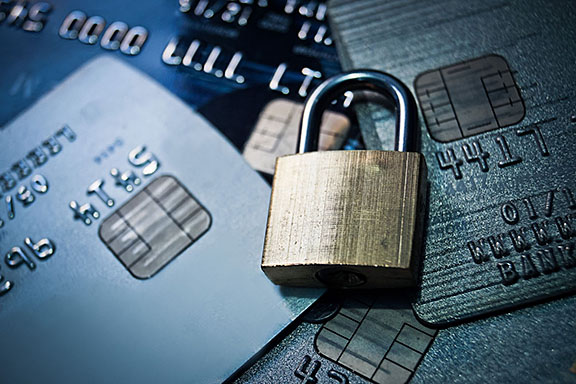Take Care
I know someone who is a zealous data manager. He keeps expense spreadsheets of every project, event, and his personal life. This is a daily rite in his life. Recently, he discovered that a bank account was locked – something probably most of us wouldn’t know immediately since we’re not quite so careful and watchful. Ironing out the problem turned into a nightmare. Fortunately, it was a simple transaction issue, and nothing more. Even then, fixing the problem was more troublesome than the error itself, and consumed a lot of time and frustration.
Imagine that multiplied times 100 – that’s the consequence of identity theft. 
Here’s how the problem is defined: your personal and financial information is obtained and used by a third party without your permission or knowledge. This can appear in the form of a loan you didn’t take out suddenly appearing, a tax return filed in your name, accounts opened using your data, purchases made using your credit card or bank account, and so on.
Naturally, this kind of thing has gone on as long as there has been private property to protect. But in the age of instant, worldwide digital communication, the problem has become immeasurable. The risk is constant. If you remember the “Nigerian prince” scams that amused and annoyed the Internet some years back, you’ll understand how quickly the crooks saw the opportunity provided by online trickery. And then there was the email from a friend who was stuck in a foreign country following an accident, and simply needed enough money to get home – appeal to our better nature and the troubles of a friend, what could go wrong?
But identity theft is genuine, and can create genuine havoc for anyone, vigilant or otherwise.
While not all of us are diligent enough to check on all our accounts daily, the size of the problem warrants, no doubt, a little more diligence than we’re likely practicing now. Some reports indicate that about 10 million Americans are victimized annually.
What to do? There are any number of companies and agencies that can help, and as I stress periodically in this column, for those of us who do a lot online the first step is to protect your digital footprint with anti-virus and malware protection software, and run regularly scheduled scans of your data. A VPN service may be a wise step – these are added layers of protection aimed at not finding existing malware, but encrypting your data by sending it through a Virtual Private Network so that it is more difficult for thieves to find it and grab it.
Remember the good old days, when we paid our bills with checks (yes, they were vulnerable, too) and then reconciled our checking accounts monthly with printed statements? We’d match each withdrawal and deposit to our “checkbook” (it was a real thing, kids!) to be sure the two were in synch, and determine that our balance was correct.
This is still a good idea. Keep a record of your transactions on your credit cards, Paypal and Venmo, direct withdrawals, and then check it against your online bank statements – at least monthly. This can be done even more often, thanks to the very technology that makes it more necessary to do so.
Check your credit report periodically. There are three major reporting bureaus: Equifax, Experian, and TransUnion. Once you get a baseline, you can fairly easily keep track of any anomalies.
Are you getting collection calls? And be aware that there are scammers who will send you text messages and call you to tell you that there is a serious problem that must be taken care of immediately.
Watch for any unusual issues with insurances, medical, homeowners, auto, etc. Denied coverage or statements about claims you didn’t make.
Are you getting strange mail, or not getting the mail you expect (bills, statements, etc.)?
Be wary of any company or organization that wants your full SSN. I recently had a conversation with an organization that asked for my full SSN. I simply said, no, I don’t do that. The last four digits are sufficient.
Online, in addition to my frequent recommendation to use some form of secure password system, Google yourself from time to time (or sign up for Google Alerts), use the best malware and virus protection programs you can, and consider some form of network security – I even ran into an issue with a mesh extender purchase which opened your home network to data breaches. One option is to sign up for an Identity Theft Protection service. There are many available, and as usual it’s good practice to look deeply into what they will do for you, and how much vulnerability you’ll still have even after mitigation.
With your data, you can never be too careful.










